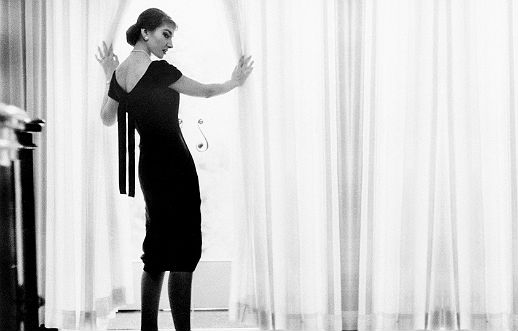

The reasons for Maria Callas’s vocal decline and death, on September 16, 1977 in her Paris apartment, have never been completely clarified until today, although several theories have been put forth, including suicide, firmly denied by her servants only in recent times. But now science and technology have eliminated false deductions, narrowing the field to medicine and phoniatrics, revising past diagnoses, adding them to new research and providing a convincing picture.
It appears that the soprano suffered from dermatomiositis, a disorder that causes slackening of the muscles and tissues in general, including those associated with the larynx: hence the discontinuity and the vocal decline that began showing already in the early 1960s. The treatment for dermatomiositis is based on cortisone and immunosuppressants, the side effect of which can include heart failure.
Two phoniatric experts, Franco Fussi and Nico Paolillo, have presented the results of their research at the University of Bologna in an panel organized by Marco Beghelli of the publishing house Il Saggiatore and devoted to the scientific analysis of the Callas phenomenon. The starting point was to examine, using modern scientific instruments, Callas’s recordings, both studio and especially live, so as to ascertain what really changed in her voice between the 1950s, her prime years, and the 1960s, when her voice started to show increasing problems in the passaggio and uneven registers, until the difficult concerts of the early ‘70s.
Recording of the same arias recorded in different years have been subjected to a spectrographic analysis, which revealed that in her last period Callas had de facto become a mezzo-soprano: this explains the unnaturalness of her top, now harsher and less pleasant. Fussi and Paolillo have also analyzed Callas’ last videos, which reveal muscular slackenin: her chest does not expand when she breathes; on the contrary, every time she inhales, she raises her shoulders, and contracts her deltoids, a most incorrect manner to support one’s voice.
On this basis the dermatomiositis diagnosis, first formulated by Dr. Mario Giacovazzo, who visited the soprano in 1975, but revealed his findings only in 2002, has received a further confirmation. Fussi and Paolillo have also investigated the clinical picture connected to this pathology, to the extreme consequences of a cardiac arrest. In this way they have on one hand unequivocally eliminated the barbiturate hypothesis and on the other verified in artistic terms how her decline should not be attributed to the excessive vocal effort or to external causes, such as the emotional and wordly tensions linked to her liaison with Aristotle Onassis.
Married to the Veronese industrialist Giovanni Battista Meneghini, Callas had a relationship with the Greek tycoon from the summer of 1959, giving birth to a son who died in April 1960 right after delivery. Callas, who had in the mean time separated from Meneghini, was left by Onassis, who in 1968 married Jacqueline Kennedy.
There is, however, a relationship between her decline and her weight loss; she shed 30 kilos, about 66 pounds, in 1954 with a method that is still obscure, since nobody has ever been able to discover whether she actually ingested the Taenia solium, or tapeworm. Fussi and Paolillo pointed out that, on the basis of recent cases, a weight loss can cause a decreased physical support of the vocal apparatus and a lesser homogeneity between registers.
On the basis of these observations they have re-examined the famous episode when Callas interrupted the opening night of Norma at the Opera of Roma on January 2, 1958, sending home even the President of the Republic Giovanni Gronchi. The two experts have spectrographically analyzed the archival recording of that performance, after having it restored. It is the document of a fatigued voice, uneven in its registers, not as well controlled as before. It wasn’t a whim, Callas was truly unwell; she had tracheitis and her muscles were perhaps already yielding: her decline had started.

























Comments